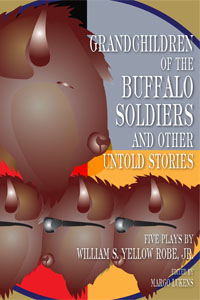The Lost German Slave Girl: The Extraordinary True Story of Sally Miller and Her Fight for Freedom in Old New OrleansPosted in Books, History, Law, Louisiana, Media Archive, Monographs, Passing, Slavery, United States, Women on 2011-11-13 19:48Z by Steven |
Grove/Atlantic, Inc.
November 2005
288 pages
Paperback ISBN-13: 978-0-8021-4229-0
John Bailey
It is a bright, spring morning in New Orleans, 1843. In the Spanish Quarter, on a street lined with flophouses and gambling dens, Madame Carl Rouff recognizes a face from her past. It is the face of Salomé Müller, her best friend’s daughter who disappeared twenty-five years earlier. But the young olive-skinned woman claims her name is Mary Miller—she is the property of a Frenchman who owns a nearby cabaret. She is a slave, with no memory of a “white” past, or of the Müller family’s perilous journey from its German village to New Orleans. And yet her resemblance to her mother is striking, and she bears two telltale birthmarks. Had a defenseless European orphan been callously and illegally enslaved, or was she an imposter? So began one of the most celebrated and sensational trials of nineteenth-century America.
In brilliant novelistic detail, award-winning historian John Bailey reconstructs the exotic sights, sounds, and smells of mid-nineteenth-century New Orleans, an “infernal motley crew” of cotton kings, decadent river workers, immigrants, and slaves. Miller’s dramatic trial offers an eye into the fascinating laws and customs surrounding slavery, immigration, and racial mixing. Did Miller, as her relatives sought to prove, arrive from Germany under perilous circumstances as an indentured servant or was she, as her master claimed, part African and a slave for life? The trial pits a humble community of German immigrants against Mary’s previous owner, John Fitz Miller, a hardened capitalist who is as respected by the community for his wealth and power as he is feared and distrusted, and his attorney, John Randolph Grymes, one of the brashest and most flamboyant lawyers of his time. Was Sally Miller’s licentious lifestyle proof that she was part African, as the defense argued? Or was she the victim of a terrible injustice? Bailey follows the case’s incredible twists and turns all the way to the Supreme Court, and comes to a shocking conclusion.
A tour de force of investigative history that reads like a suspense novel, The Lost German Slave Girl is a fascinating exploration of slavery and its laws, a brilliant reconstruction of mid-nineteenth-century New Orleans, and a riveting courtroom drama. It is also an unforgettable portrait of a young woman in pursuit of freedom.





